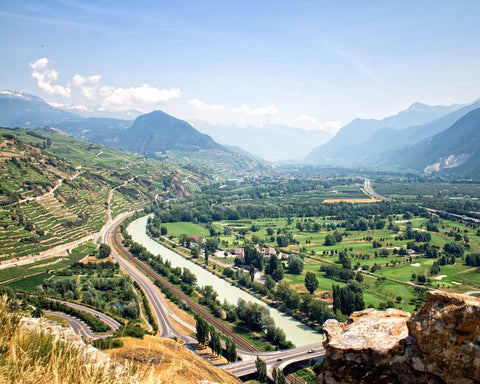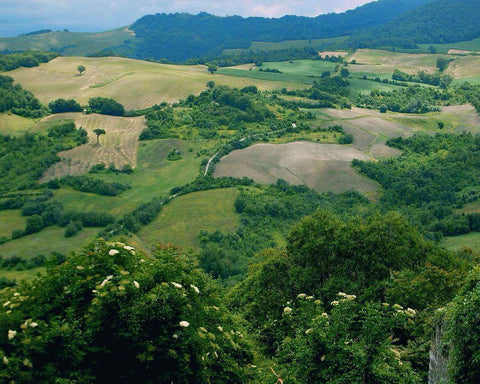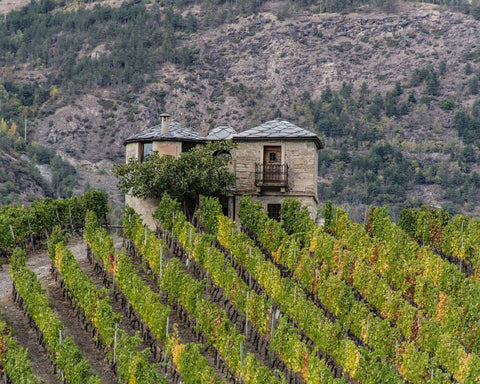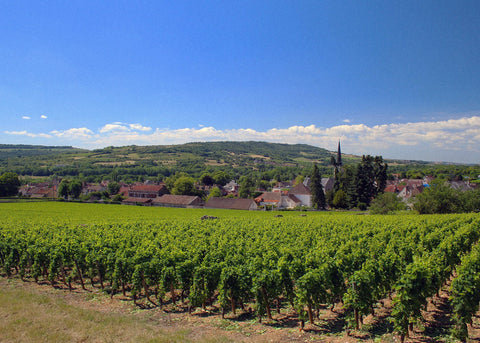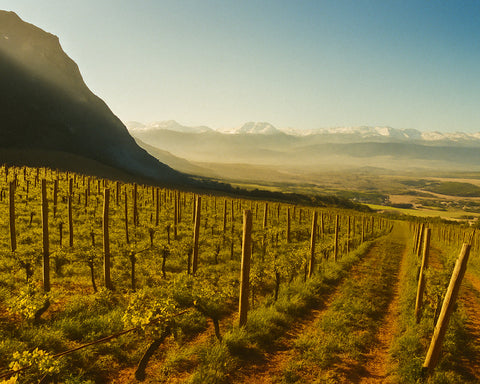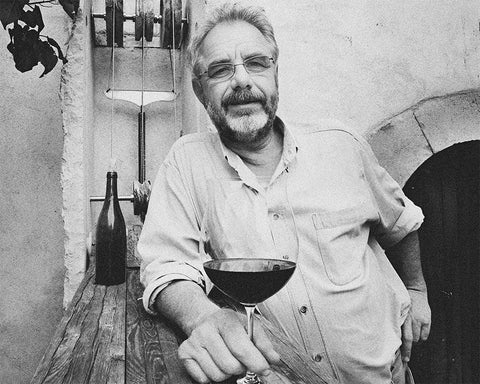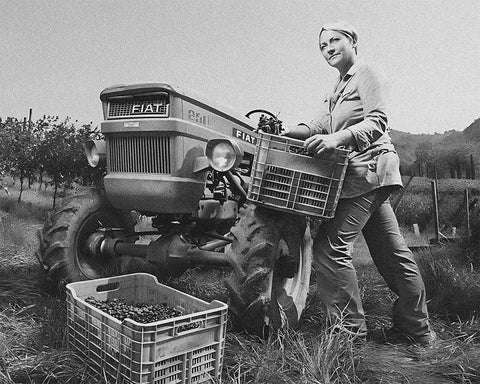Someone once said: “A white wine fermented without any time on the skins is like listening to Pink Floyd covered by Justin Bieber and thinking you know what rock music is.”
EPIPHANY
I admit it, that someone was me and every time I look back at the first time I tried what is now commonly known as orange wine I relive what is nothing short of a cathartic experience, a true orange epiphany. Any epiphany must entail a full paradigm shift, which in my case can be summarised in the Magna Mater Maceratorum commandment (the Great Mother of all Macerations' commandment):
“Thou Shalt Not Evermore Imbibe Gollum-coloured and Sadness Candy-flavored Wines.”
Said epiphany doesn’t necessarily have to be constrained to a single momentous episode. In my case it bloomed into existence through the manifestation of a Holy Macerative Trinity – obviously in three parts.
ORIGINS
Let’s flashback to about 10-12 years ago when I was travelling to Japan about once a month. As all vinnaturist Padawans should know – and if you don’t please do repent at once lest thou shall be damned to an eternity of Parkerized oak-grenades – Japan has been natural wine Nirvana since time immemorial, actually well before natural wines were a thing not only in the US but in Europe as well. A promised land where you’d stroll by the neighborhood shop and casually bump into vintages of Cornelissen, Radikon or Cantina Giardino many would kill for.
It was there that the universe was born anew and the tyranny of gummy-bear aromas and synthetic vanilla-butter crumbled under the onslaught of something that, at the time, seemed utterly alien and unsettling: flavor. Yes! Flavor, in all its multifaceted glory and its unending depth. This is probably the most shocking difference between whites made naturally and not deprived of the skins and pale conventional ones. In quick and unforgiving succession, these were the highlights of my baptism of (orange) fire:
- Vodopivec Vitovska 2002 – a rare pearl from the Kras area of Friuli: martian winds, Lovecraftian rocks and hidden depths of cosmic fruit.
- Dario Princic Bianco Trebez 2004 – epic skin-contact fireball from Friuli, albeit this time from Collio. Thanks to the Gods of the Skins ubiquitous in Japan, it’s a cosmic tapestry of depth, vibrance and condensed might: dried spiced quince, camphor and prickly pear with Asgardian honey.
- Panevino Alvas 2008 – from my homeland of Sardinia, a rare and majestic beast of a natural wine from druid-genius Gianfranco Manca. It's a field blend of no less than 7 indigenous grapes, many almost extinct, from old vines, forged on the sacred fire of maceration for whatever length of time he feels like (he doesn’t remember actually, anything from 3 weeks to 7 months). A savage warrior-poet swinging blades of fragrant lentisk, braised persimmon, turmeric and chutney of braised sage and lavender.
Any of these wines would have had none of the depth, complexity and explosive energy that makes them unique without maceration being an essential, though by far not the only one, component of their narrative.
DEFINITION
But what are orange wines? Why are they so talked about and yet often misunderstood? Let's lay the foundation with some definitions.
When referring to orange wines – technically known as skin-contact whites – we usually speak of wines from white grapes which are fermented and macerated not only with the juice, as it happens in conventional white wines, but also with their skins. The maceration phase can vary from a couple of days to several months, or even more than a year in some extreme cases.
It’s worth noting that, although no causal relation exists between orange wine and natural wine, the greatest majority of skin-contact wines are made naturally from organic, biodynamic, or sustainably farmed grapes. It is almost a contradiction making orange wine form industrially farmed grapes that lack phenolic elements essential to skin-contact winemaking or to filter the wine. In other words, most orange wine producers are devoted to natural winemaking.
REBIRTH
Historically, before the advent of chemical-based intensive farming and invasive modern winemaking techniques, which started in the 60s, pretty much all white wines in Europe and Georgia were made with some skin contact. What was known as “vino del contadino” – the farmer’s wine – was almost invariably an orange wine. Skin-contact wines were made not only for family consumption, but also to be sold – yes, there was a market for orange wine. Industrialization of winemaking and economies of scale killed this market, and skin-contact became a niche product.
But in the past twenty years, the millenia-old skin contact technique has made a dramatic comeback. Propelled by the passion and perseverance of a platoon of dedicated vignerons in Friuli-Venezia Giulua, such as Radikon and Gravner, and subsequently in Slovenia and Georgia, we have witnessed a skin-contact Renaissance.
As many natural vignerons will tell you, the skin in white grapes is where anti-oxidant and many other components, such as phenolic compounds and tannins, reside. These allow the wine to live longer and to survive the test of years thriving and gaining in complexity. What happens with most conventional whites? The main idea is that they are produced to be commodities, replicable in identical fashion each vintage.
WISDOM
The natural vigneron Andrea Cervini, a true artist of elegant and passionate macerations in the Piacenza Hills of Emilia-Romagna, described this dynamic with great accuracy.
“To minimize variation and industrialize agronomical practices, conventional farming bombards the vines with chemical compounds which drain life and nutrients from the soil and richness of organic compounds from the grapes. What you get lacks the inner microbial life needed to healthily ferment. You then again bombard the poor grapes with selected yeasts which not only kick-start fermentation and guarantee it will go without a hitch but also force a limited range of standardized aromas more often than not veering towards banana-land and the planet of kiwi and melon. The grapes are force-fed with predetermined flavors which have nothing to do with terroir or vintage.
The skins, being an integral part of the grape, imbue the wine with a cornucopia of flavours – not aromas, flavors – well beyond, to adapt Noam Chomsky’s concept, what is the “accepted range of discourse” in conventional winemaking. What is considered acceptable in conventional wines covers only a very narrow spectrum of what a wine can taste like. Taste here is another of the key issues.
If you think of the classical format for tasting notes, considered until recently undebatable dogma, you will invariably find an eruption of aromas, mostly ranging from the fruity and floral to pink unicorn-flavored bubble gum. Ok, great! But the palate? What about flavors? Zilch! Nothing on the palate except generic notations on acidity, freshness, body etc. These are no doubt important but they are not flavors and in the end if we’re drinking a wine that explodes at the nose like a cheap Chanel n.5 knockoff and gives us nothing to chew on on the palate then it’s not wine at all but a soulless and grey imitation of it.
The skins, when masterfully handled, are the window on the soul of grapes and terroir and burst open the gate for a sensory and emotional experience of new flavors. We’ll let you macerate on this notion for now and prepare for the next chapter, where we’ll explore other hot topics and misconceptions about all that is good and orange.
Author: Giovanni Segni ©


